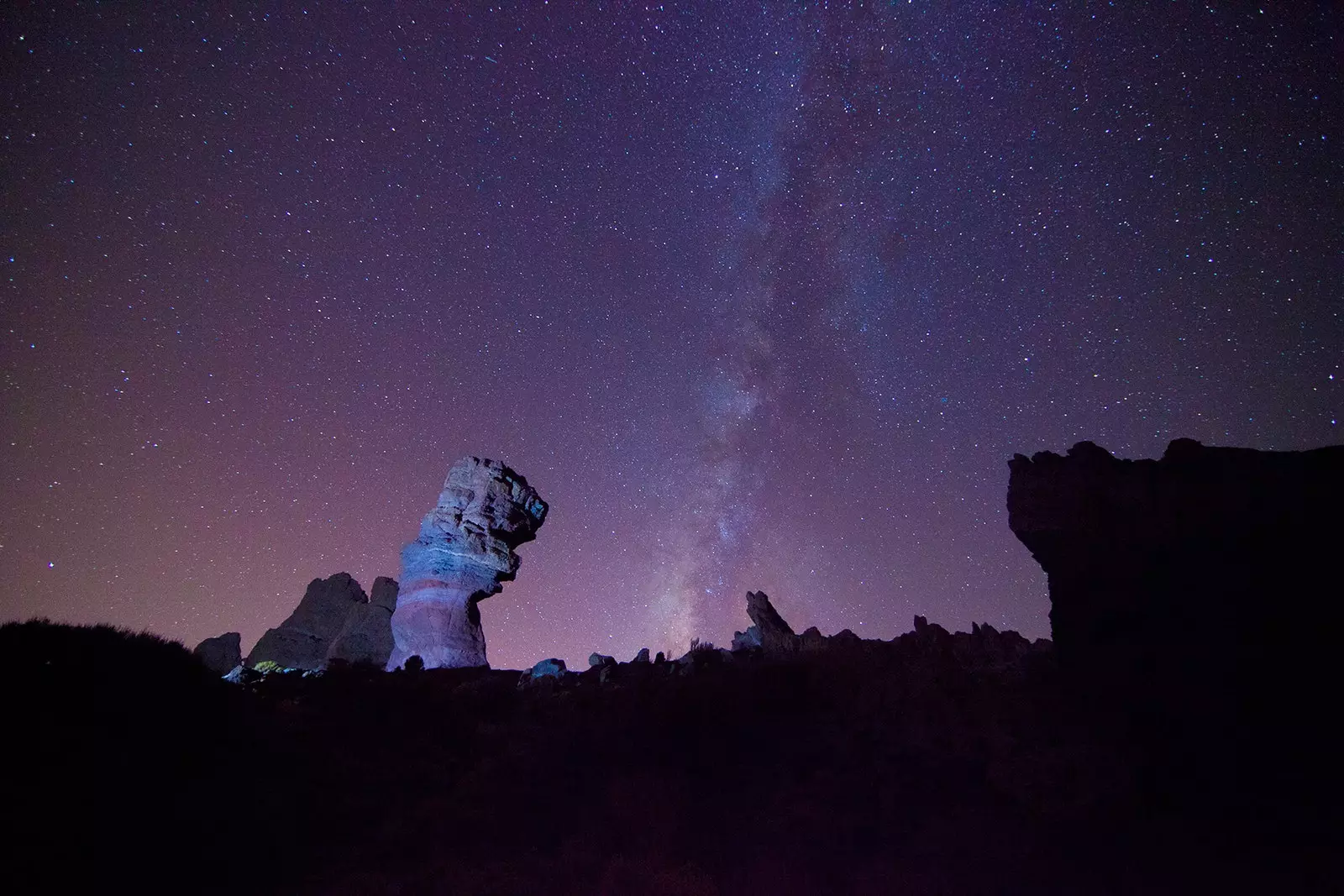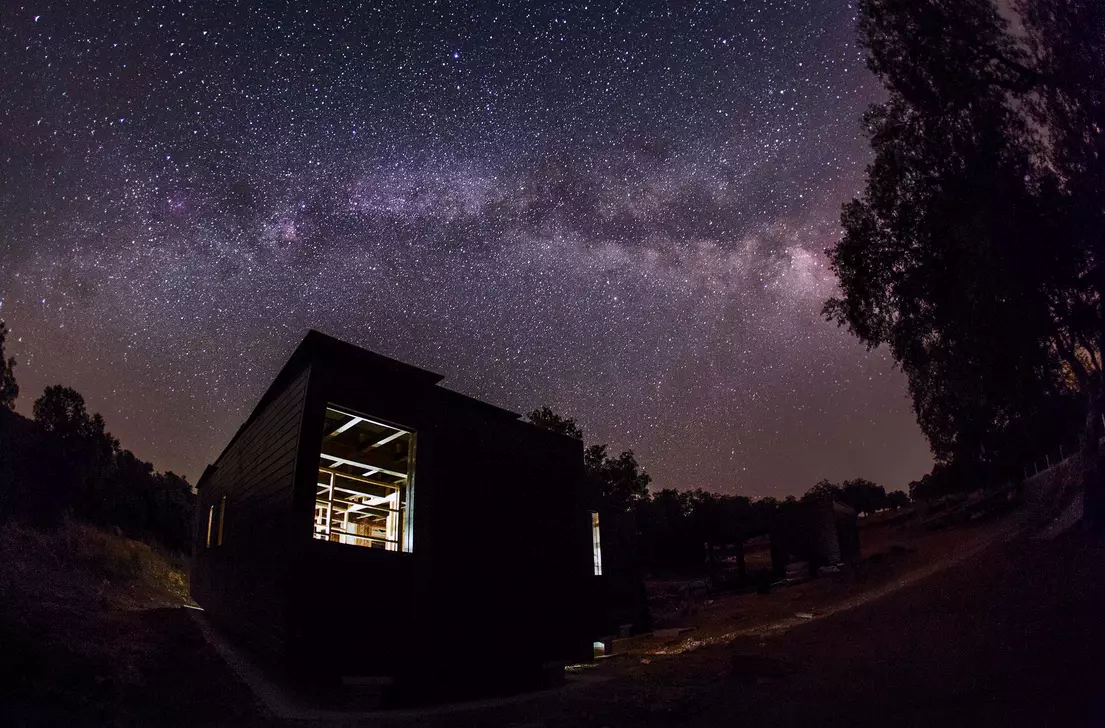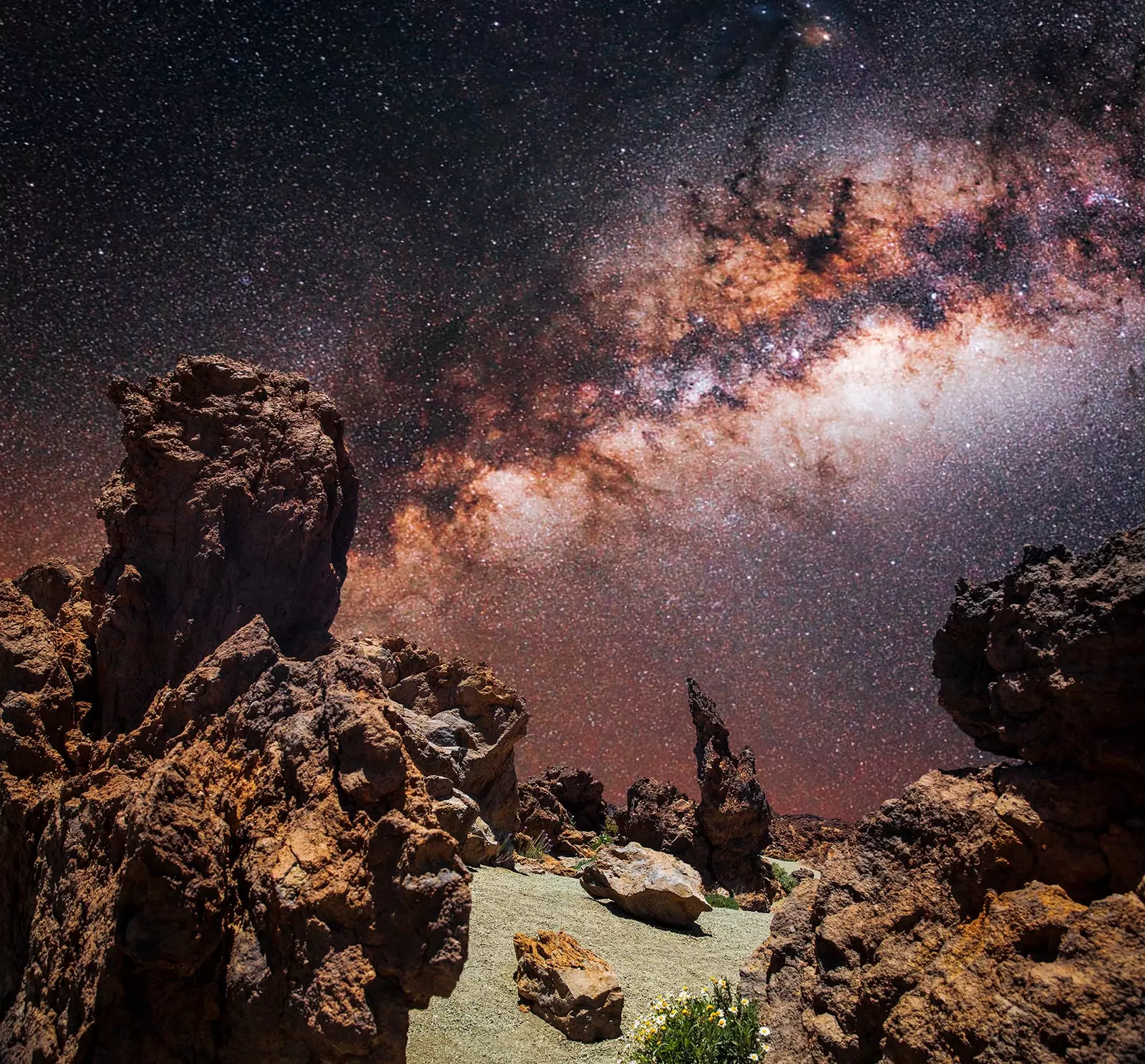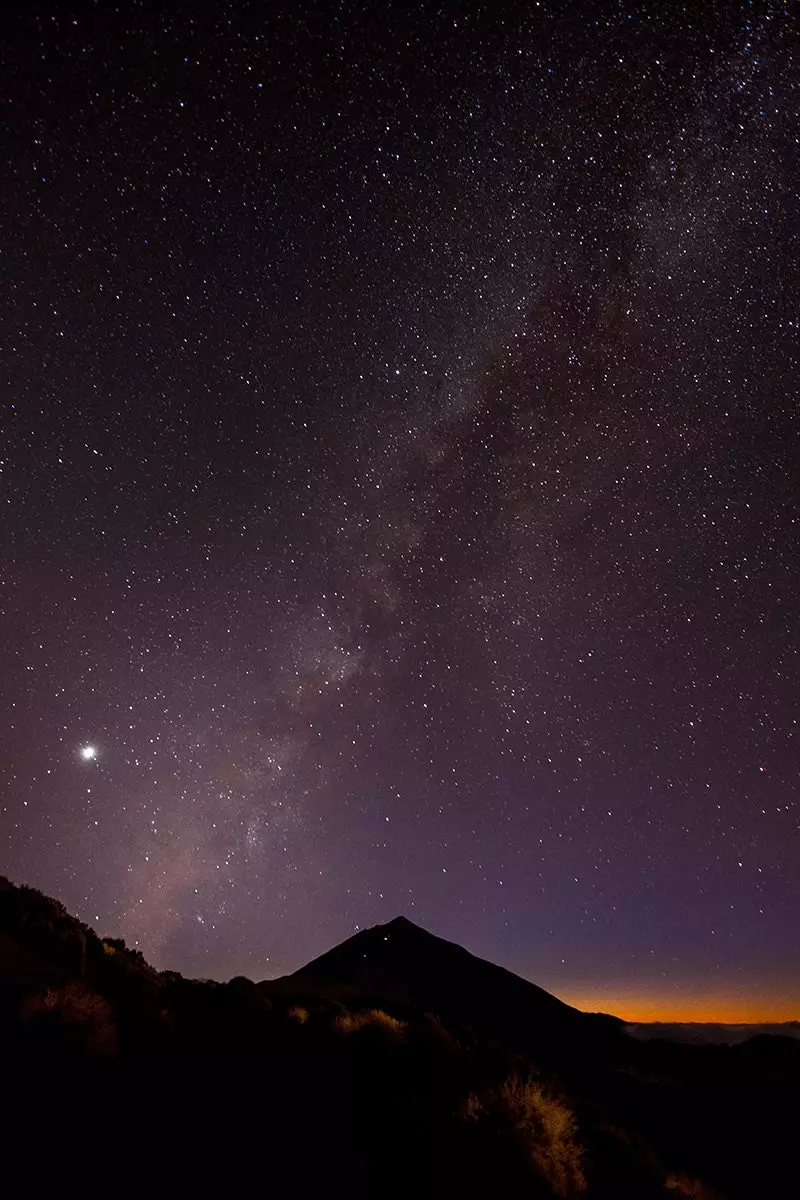
Roques de Garcia in Tenerife
What was the origin of the Foundation?
It is an entity created by the **Institute of Astrophysics of the Canary Islands (IAC)** and the consulting firm Corporation 5 to protect the night sky and spread astronomy.
The starry sky is everyone's heritage and a real raw material to develop economy in territories, especially rural, through the star tourism
UNWTO has created a Scientific Tourism/Astrotourism Working Group , led by the foundation, to exchange information among members, given the success of this type of tourism. The foundation is governed by the principles and recommendations contained in the “ Declaration on the Defense of the Night Sky and the Right to Starlight ”, arising from the I International Starlight Conference, which took place in La Palma in 2007.
What are your lines of work and objectives?
Promote initiatives that enable the starry sky protection , such as introducing intelligent lighting systems that avoid light pollution , enable energy savings and mitigate the effects of climate change.
we have a Sky Quality Certification System that accredits territories such as Starlight Reserves (they incorporate the stellar landscape to the rest of natural assets, often already protected as Biosphere Reserves, Geoparks or National Parks, thus also contributing to the protection of nocturnal species) or as Starlight Tourist Destinations (in order to use them as a lever for astrotourism). They are complemented with routes of the stars, viewpoints, observation activities, creation of networks of rural houses and Starlight hotels, etc.
Would you say that it is growing a lot? astrotourism ?
In general, scientific tourism is increasing. Research requires large, very attractive infrastructures: astrophysical observatories , particle accelerators, space centers, etc. To satisfy the demand, they have also proliferated large science and technology outreach parks , science museums or visits to other places of scientific interest such as archaeological excavations.
Regarding astrotourism, our experience has been to confirm that there has been a spectacular increase and that we are facing an extraordinarily interesting future . Well we can say that we have opened a true tourist window to the Universe . Of course, it is necessary that the territories generate their specific astro-tourism product.
Many European countries have an ancient tradition in astronomy. In Europe there are millions of fans who enjoy this science, but they do not have the absence of clouds that requires the observation of the sky and, in addition, the very high light pollution is another insurmountable obstacle. Our geography is full of uninhabited spaces, of great darkness, in which we must develop this offer. To cite an example, there is already a starlight cottage (“ Between Oaks and Stars ”), whose offer of hosting of telescopes is having a resounding success.

The first Starlight rural house
What do you think is the reason for the increase in interest?
The human being, from his remotest origin, he has always looked at the sky trying to discover its origin and looking for answers to his own existence . Astrotourism goes beyond the mere satisfaction of contemplating the wonderful spectacle that a starry night offers, it is something that we all carry inside and that worries us, knowing the origin of that cosmos that surrounds us and of which we are a part.
On the other hand, astronomy has been a science of great practical utility . First, they were the calendars, the culture of sowing and irrigation , elaborated based on the position of the stars throughout the seasons, etc. Later, all the knowledge in the art of sailing. Astrotourism has practically just begun and its potential is unimaginable.
How does tourism influence the scientific field?
Tourism is today such a powerful and diversified industry It has influence in almost all areas. I like to see it as a fabulous exchanger of culture and knowledge . the tea scientific tourism it is a way to interest citizens in research and this is transmitted in a greater appreciation of the scientific task.
A more cultured society in science is the best support that this sector can have. Because, although the task of the scientist is justified by itself, public research is funded by citizens and, therefore, they have the right to obtain returns that we call “social returns of science”.
Do you have visitor numbers?
As it is tourism that is complemented by day tourism, it is still premature to try to obtain accurate data. We are getting news of the enormous success of all the activities that are carried out on the occasion of astronomical events ( eclipses, astrophotography workshops, meteor showers, etc. ) . With the launch of several tourist agencies specialized in this field , we will begin to have more precise data.
But for example, in Tenerife, the number of tourists who go up to the Teide National Park -has the certification as "Starlight Tourist Destination" and as "Starlight Reserve"- to enjoy the starry sky is 200,000 people a year.
The Montsec Astronomical Park -also accredited with the double certification- received in 2016 the record number of 32,000 visitors, with an economic impact for the tourism sector in the area close to the €1.5 million . Even without having concrete figures, we can assure you that territories certified as North Gredos, Andalusian Sierra Morena or A Veiga , in a very short time, they have seen how they become part of a new product and tourist offer.

The Milky Way between the mountains of Tenerife
What type of public is interested in astrotourism?
It is very heterogeneous : from people who really know about astronomy to others who have never looked through a telescope and are ecstatic when doing so and seeing objects from the hand of the monitor. It is moving to see the reaction of very old people when they can, for the first time in their lives, observe Jupiter or the Moon with an instrument of a certain entity.
Children, due to their innate ability to ask themselves questions, make up a particularly interesting group. Finally, the astrotourist is usually a person who also likes contact with the nature.
Which observatories in the world are of most interest to the general public?
It depends on what each one is looking for. It's one thing to visit a professional observatory where the largest telescopes in the world are located and to have that experience and a very different one is to live a approach to the universe of the hand of suitable instruments to the visitors.
When we visit a professional observatory, in practice the visit will be reduced to seeing some telescopes but we will not be able to observe anything directly. Furthermore, some of the most powerful observatories are located at a considerable height and cannot be accessed except by means of a prior acclimatization.
The astrophysical observatories in the Canary Islands are more affordable , since they are located at 2,400 meters and have a very complete battery of telescopes, including the **Gran Telescopio Canarias (GTC)** which is the largest optical-infrared telescope in the world. Many observatories have a Visitor Center that provides information on what is being done, facilitating dissemination without interrupting the work of astronomers.

This is what the Universe looks like from Mount Teide
*Find the entire report on Astrotourism in number 109 of the Condé Nast Traveler Magazine (September) . Subscribe to the printed edition (**11 printed issues and a digital version for €24.75, by calling 902 53 55 57 or from our website**) and enjoy free access to the digital version of Condé Nast Traveler for iPad. The October issue of Condé Nast Traveler is available in its digital version to enjoy on your preferred device.
